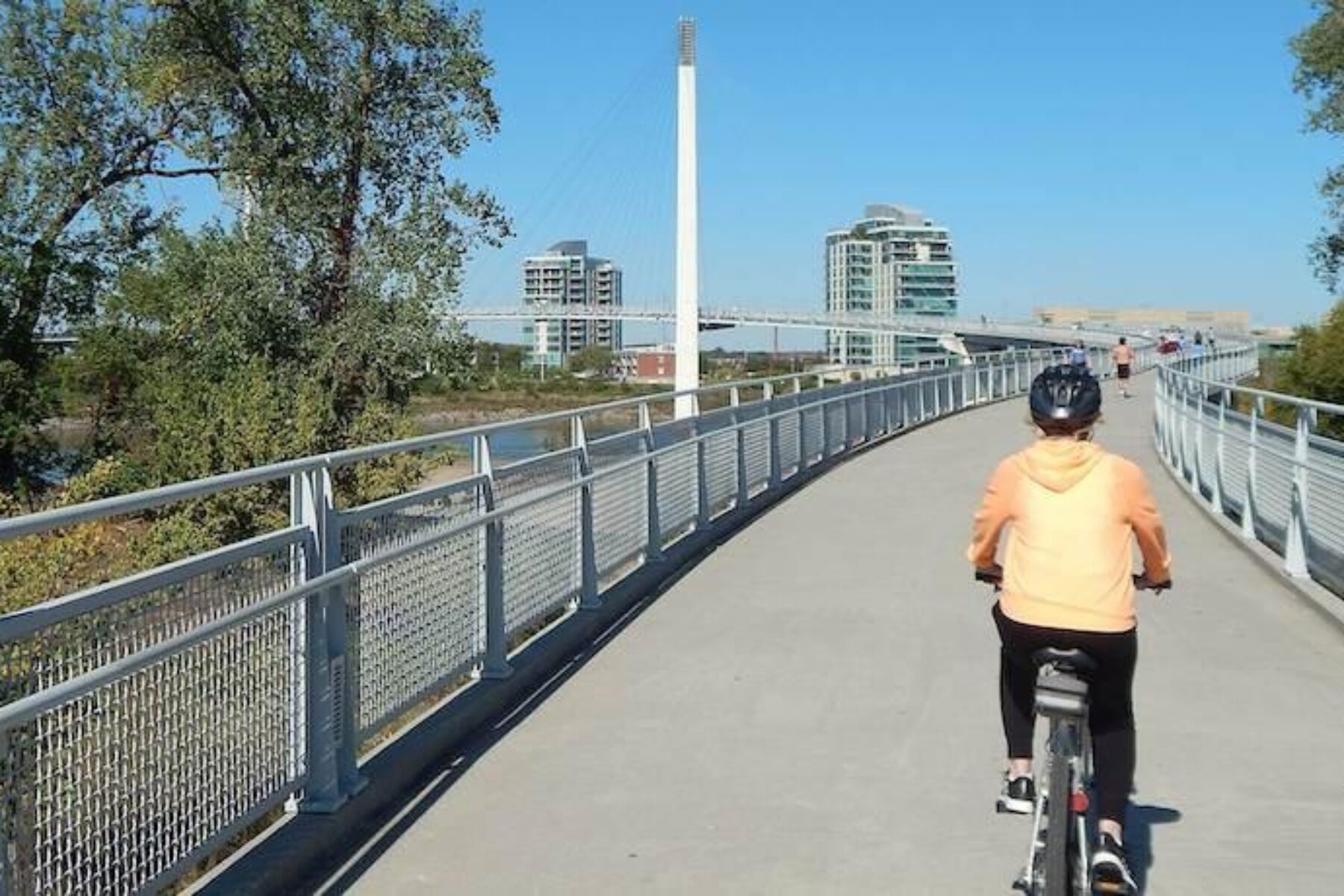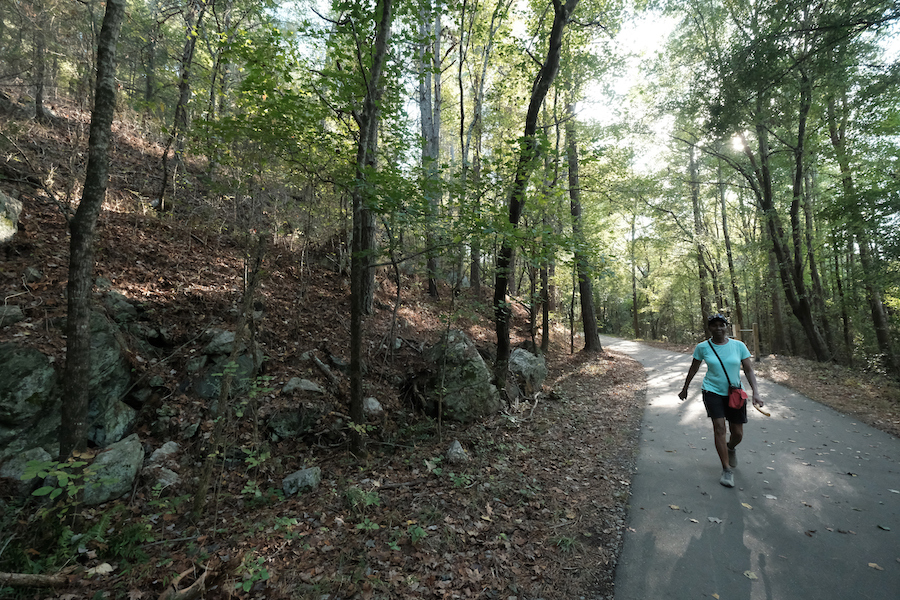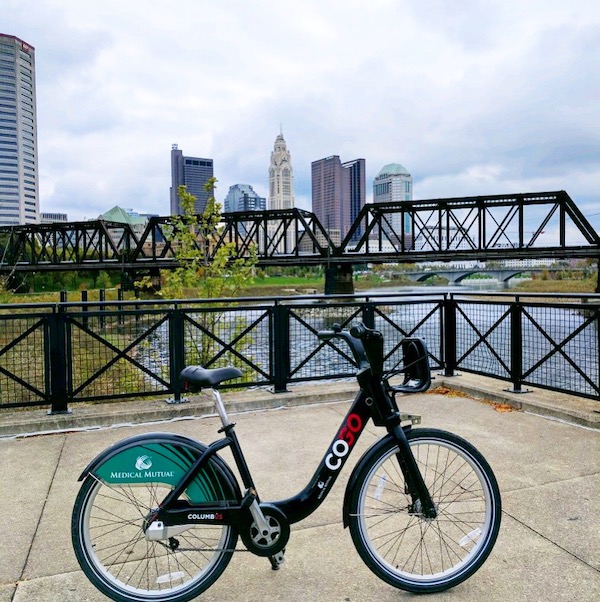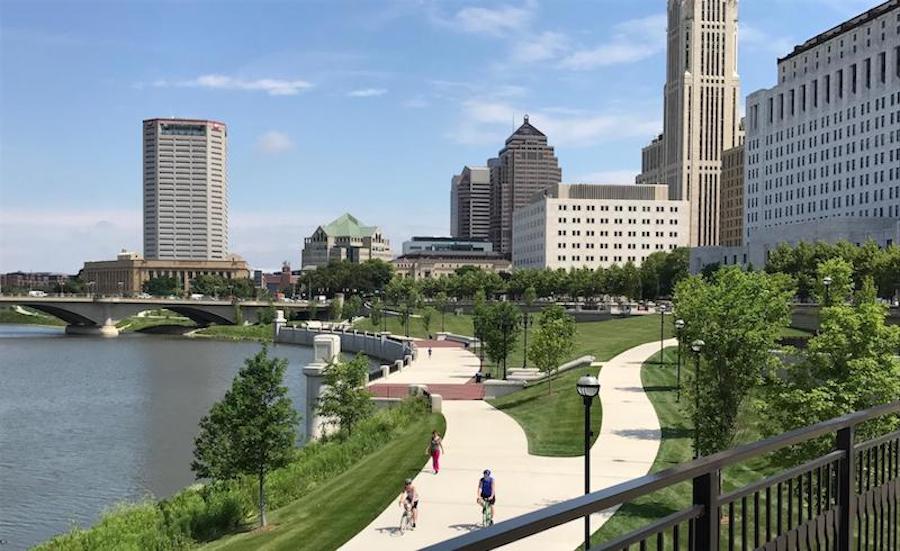Spring News from the State Legislatures

Depending on where you live, this time of year may mean the prolonged dregs of winter, early signs of Spring, or some variation on “mud season.” But for most of the country—regardless of climate or geography—it’s also the height of the state legislative season.
Most states’ general assemblies are part time and generally convene in the early part of each calendar year. The vast majority of state legislatures are still in session or have recently adjourned for the year. So what does this mean for trails and active transportation funding in the states?
Last summer, we reported that states were appropriating significant amounts of money to trails. Despite early pandemic fears of budget deficits, states ended up faring well (in part due to federal influxes), and strong interest in outdoor recreation and bicycling at the outset of the COVID-19 pandemic fueled political support for trail funding.
What trends are we seeing in 2022? Here’s a quick snapshot below.
Dedicated and Earmarked Trail Funding
Virginia is currently ironing out details for a major investment in trails. Although outgoing Gov. Northam initially proposed more than $200 million for trails, including several rural trails around the Commonwealth, the House included a smaller pot of $57 million, and the Senate agreed to $90 million with $40 million being from federal sources. Final budget details are in negotiation now, with the General Assembly reconvening after adjourning without finalizing the budget.
A bill to address chronic underfunding of California’s recreational trails (especially natural surface trails) is moving through the Assembly there, having unanimously passed a committee this week. If passed, this bill would provide $75 million next year and $15 million annually thereafter to support unfunded projects, as well as additional staffing capacity.
Trail funding has been debated this year in two neighboring Great American Rail-Trail states. A proposal in Iowa to fund the voter-created Natural Resources and Outdoor Recreation Trust Fund, which would have included several million dollars for trails, did not make it through both chambers during this year’s legislative session. However, the effort to fund the trust did make it further along this year than any of the past 10 legislative sessions and should position the initiative for complete passage in 2023. Meanwhile in Nebraska, April 7 marked a historic vote for trail funding and a significant boost for the Great American. The Nebraska Legislature voted to override Governor Ricketts’ veto of LB 1013, restoring $8.3 million in funding to construct the gap in the MoPac Trail between Lincoln and Omaha.
Replicating Rails-to-Trails’ Policy Playbook

Another state that has invested on the trails side is North Carolina, whose legislature passed $30 million for natural surface “State Trails” last year. The Great Trails State Coalition, of which Rails-to-Trails Conservancy (RTC) is a member, has embraced several policy and advocacy initiatives that RTC has successfully championed in other states. This includes championing “Year of the Trail” legislation (passed last year by the legislature for the year 2023)—which authorizes state agencies to highlight trails and hold events in support of trail development—and pursuing recurring, dedicated funding for all trails in the Tar Heel State.
Advocates in a number of states have expressed interest in creating bipartisan “legislative trails caucuses.” Caucuses are entities composed of legislators devoted to a cause and have proven instrumental in establishing sources of ongoing support for trails. After helping launch caucuses in Ohio and Indiana that have more than 40% and 30% of their state legislators as members, respectively (including strong bipartisan support and members from both chambers), RTC has been providing assistance for new trails caucuses in West Virginia and Wisconsin (all four states have TrailNation projects™ and/or help host the Great American Rail-Trail®) and advising other states on this powerful advocacy approach.
Facilitating Trail Creation

Legislation that doesn’t involve a direct outlay of state funds can help facilitate trail creation, too.
South Carolina’s legislature has a bill carrying 20 sponsors and co-sponsors from both parties that would provide a one-time tax credit to landowners who allow a permanent recreational easement across their property for trail creation. Charleston’s newspaper editorialized in support of this bill.
Meanwhile, a bill in Colorado that we believe is the first of its kind has passed in the legislature. Powerline corridors are often excellent locations for trail rights-of-way, but local jurisdictions—sometimes numerous ones—often don’t realize their trail potential or understand how to use those corridors to create a trail. The new Colorado bill, now awaiting Gov. Jared Polis’ signature, would charge utilities with informing local governments within new powerline corridors about trail creation and best practices for funding and creating such trails.
Spending Federal Funds

Indiana took the lead in leveraging federal funding for trails last year by investing $60 million of the state’s American Rescue Plan Act (ARPA) dollars in its Next Level Trails program to fund multiuse trail infrastructure. Advocates have been encouraging their elected officials to follow suit, and several states and municipalities are now more actively considering ARPA funds to support walking, biking and trails in line with economic and public-health recovery goals.
Statewide economic impact studies (EISs) have become a complementary policy strategy, and Ohio is among the states in which the trails legislative agenda is prioritizing an EIS to provide “make the case” data to help leverage federal dollars. The Rebuilding American Infrastructure with Sustainability and Equity (RAISE) program granted $400 million to safe trail, walking and bicycling infrastructure in 2021, underscoring the impact that connected active-transportation networks can have locally and regionally. And, with the potential of federal earmarks coming back in FY 2023, it is important to be prepared with shovel-ready planning and construction projects.
As mentioned above, an important policy strategy that has taken off in 2022 is the establishment of state-based “Legislative Trails Caucuses”—with Ohio, Indiana and Wisconsin making notable progress on generating support for trails via these bipartisan/bicameral groups of state legislators committed to improving their constituents’ quality of life. Several other states, including West Virginia, Michigan and Georgia are also considering this approach to move their goals forward. RTC would love to talk with you about how to establish a Trails Caucus in your state. Please email Brian Housh for more information.
Recreation vs. Transportation

Typically, we see funding for biking and walking in two forms: recreation and transportation. The former means that the funding comes from pots of money intended for parks, wildlife, natural resources, the environment and land conservation; it may be administered by a state agency charged with any of those things (e.g., Department of Natural Resources, Department of Parks and Wildlife, etc.). The latter comes from transportation funds—whether dedicated to bicycling and walking, or part of overall transportation spending, including roads and transit—and is implemented by a Department of Transportation (in nearly every state).
Anecdotally, we’re seeing more proposed state funding for trails, such as in Virginia, from the outdoor recreation side, than from transportation. (Although, Washington State passed a large, multimodal transportation funding bill.) This could be a continuation of the aforementioned broad bipartisan support for trails and outdoor recreation that surged in the last two years. But it may also have to do with the volume of transportation funds coming from the federal government leading states to decide not to spend their own money on transportation infrastructure (e.g., on-street bike lanes), and instead let the federal government pay for it.
As we move ahead, RTC will continue to monitor the situation and alert our national trail use community of opportunities to help solidify support for trail building in the state legislatures.
Stay tuned as we anticipate developments and new opportunities.
This blog was originally posted on April 6 and updated on April 8, 2022.

Donate
Everyone deserves access to safe ways to walk, bike, and be active outdoors.